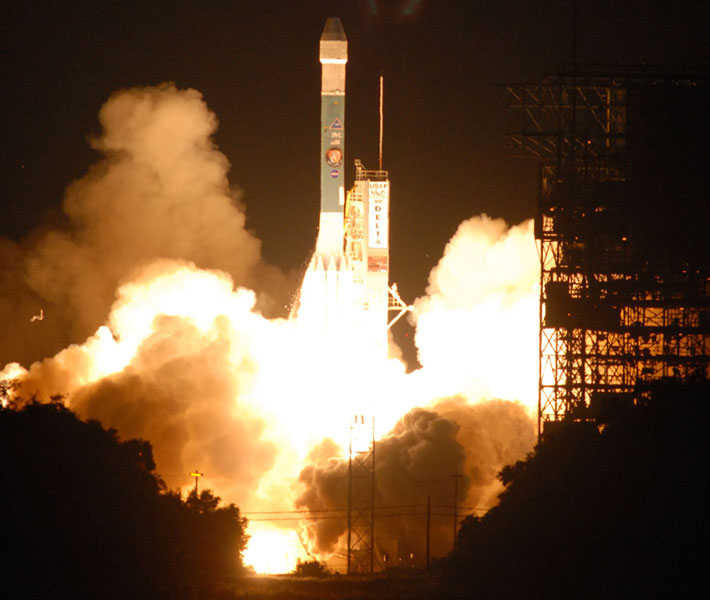
|
Credit & Copyright: NASA
Explanation:
Can Mars sustain life?
To help answer this question, last week
NASA launched
the Phoenix mission
to Mars.
In May 2008,
Phoenix
is expected to land in an unexplored
north polar region of Mars that is
rich in water-ice.
Although
Phoenix cannot
move,
it can deploy its
cameras,
robotic arm, and a small
chemistry laboratory
to inspect, dig, and chemically analyze its
landing area.
One hope is that Phoenix will be able to discern telling clues to the history of
ice and water on
Mars.
Phoenix is also
poised to explore
the boundary between ice and soil in hopes of finding clues of a
habitable zone
there that could support
microbial life.
Phoenix has a
planned lifetime
of three months on the
Martian surface.
|
January February March April May June July August September October November December |
| ||||||||||||||||||||||||||||||||||||||||||||||||
NASA Web Site Statements, Warnings, and Disclaimers
NASA Official: Jay Norris. Specific rights apply.
A service of: LHEA at NASA / GSFC
& Michigan Tech. U.
Based on Astronomy Picture
Of the Day
Publications with keywords: launch - Mars
Publications with words: launch - Mars
See also:
- APOD: 2025 September 28 B Leopard Spots on Martian Rocks
- APOD: 2025 July 15 B Collapse in Hebes Chasma on Mars
- APOD: 2025 July 6 B The Spiral North Pole of Mars
- APOD: 2025 June 29 B Dark Sand Cascades on Mars
- APOD: 2025 June 22 B A Berry Bowl of Martian Spherules
- APOD: 2025 June 15 B Two Worlds One Sun
- Perseverance Selfie with Ingenuity
